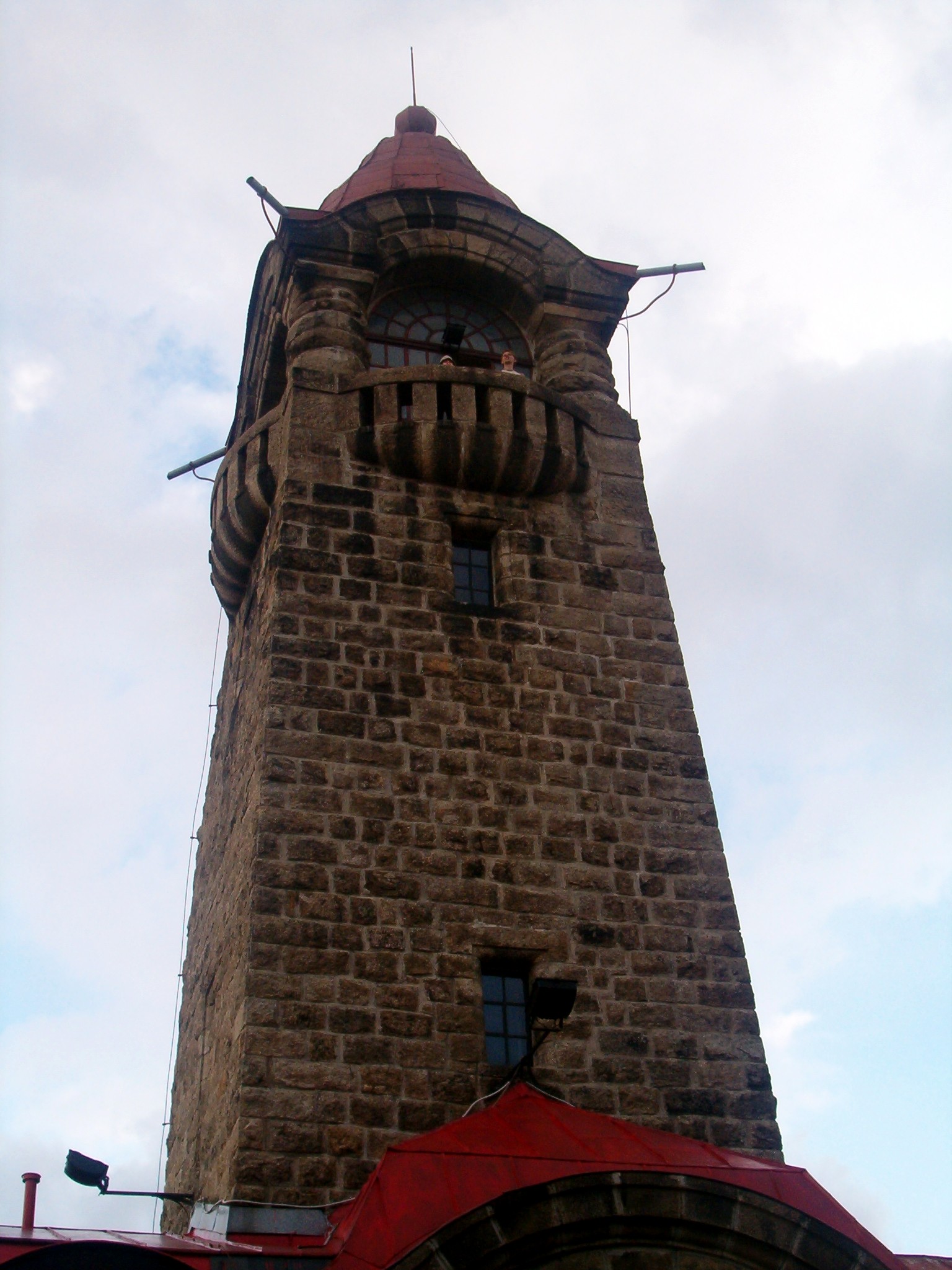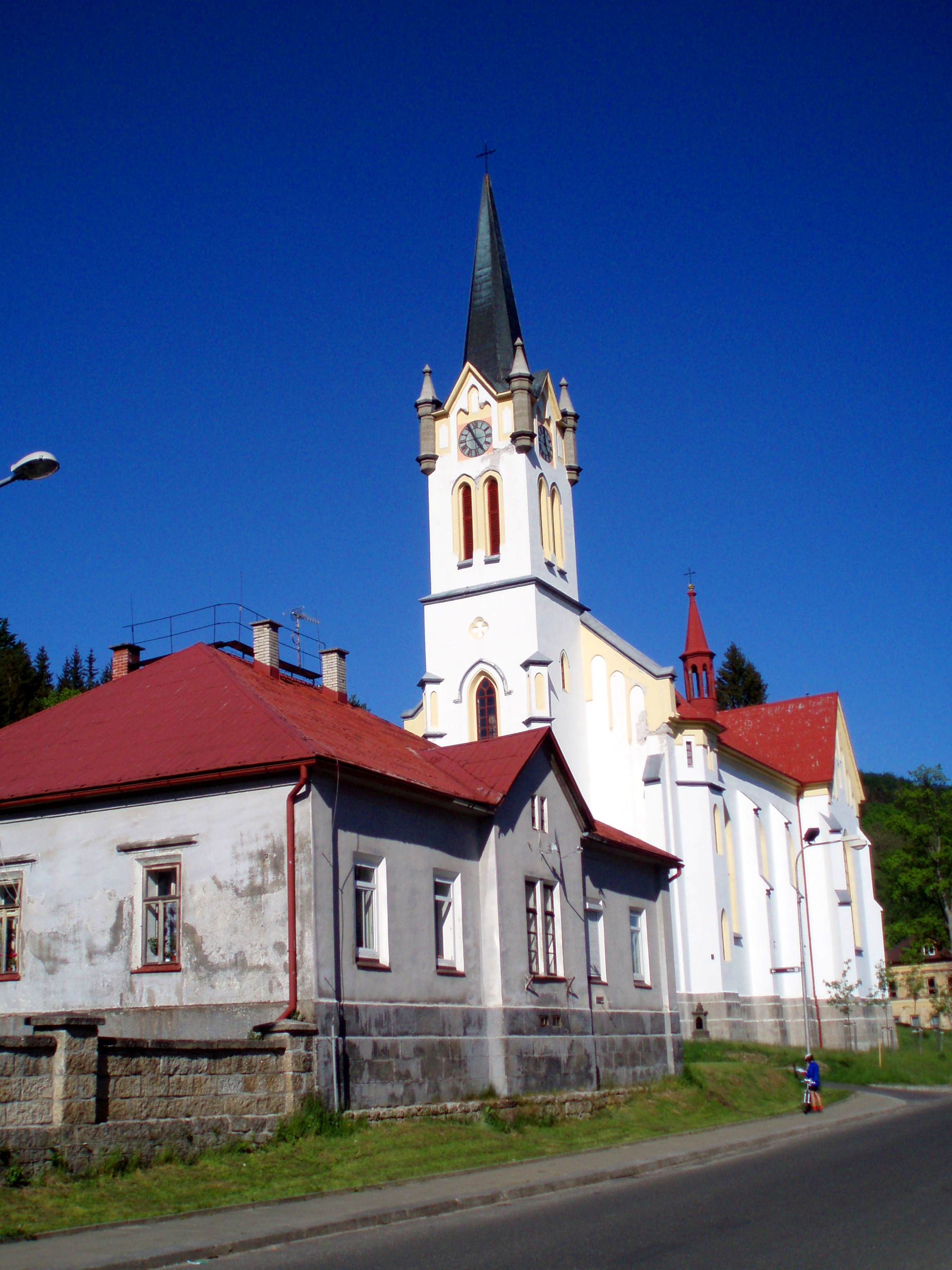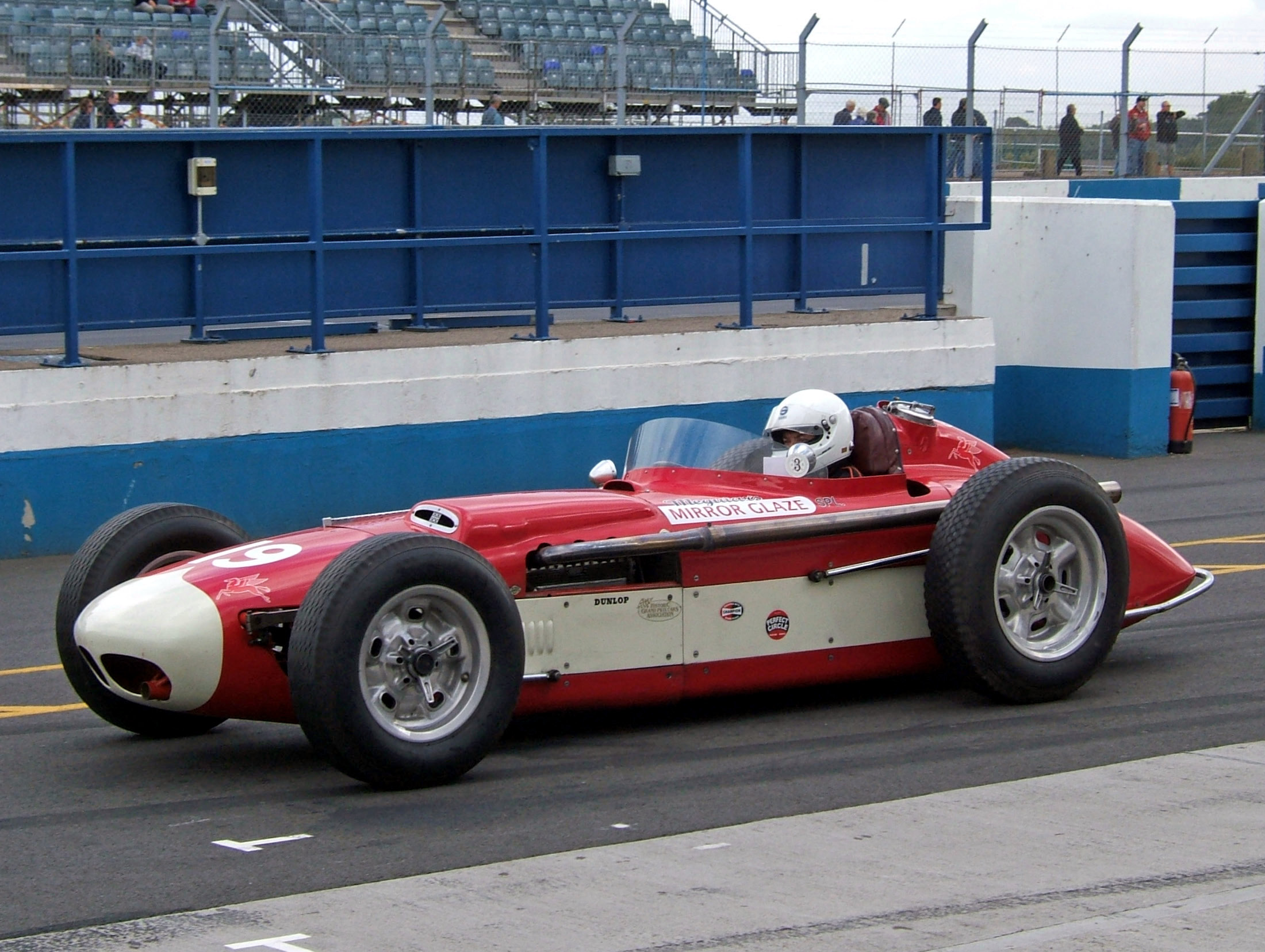|
Smržovka
Smržovka () is a town in Jablonec nad Nisou District in the Liberec Region of the Czech Republic. It has about 3,900 inhabitants. Etymology The name Smržovka was given to town by overgrown mountain forest, where there was a large amount of Morchella, morels (, ). Geography Smržovka is located about east of Jablonec nad Nisou. It lies in the Jizera Mountains. The highest point is the mountain Černá studnice at above sea level. The Kamenice (Jizera), Kamenice River flows along the northeastern municipal border. History Smržovka was founded in the first half of the 16th century during the colonization of the Jizera Mountains. The first written mention of the village is from 1568. The most common craft at that time was weaving. The area was part of the Semily estate, owned by the Smiřický family. In 1622, the estate was purchased by Albrecht von Wallenstein. In 1635, the Desfours family acquired Smržovka, which became a separate estate in 1662, and owned it until 1848. In ... [...More Info...] [...Related Items...] OR: [Wikipedia] [Google] [Baidu] |
Kaipan
Kaipan is a small Czech Republic, Czech vehicle manufacturer in Smržovka focused on producing Roadster (automobile), roadsters. History The company was founded in 1991, but the first car, Kaipan 47 based on Lotus Seven (1957–1972), has been manufactured since 1997. Later it was replaced by modified type 57 with Volkswagen engine 1.8 20V Turbo. In 2006, Kaipan uncovered the first model with their original bodywork, Kaipan 14. They have engine from Škoda Favorit and the production process is provided as a rebuilding of the prime car. Kaipan 14 was also shipped to Germany, Netherlands, Serbia, Montenegro and Slovakia. In 2008, Kaipan 15 with newer Škoda Auto, Škoda engine was introduced. Until 2011, around 340 of these cars were made. Kaipan 14 kit (excluding parts from Favorit) cost 235,000 Czech koruna, CZK, the price of already assembled version of Kaipan 15 was 499,000 Czech koruna, CZK. In the beginning of 2012, production of brand new type 16 has started. It has a ... [...More Info...] [...Related Items...] OR: [Wikipedia] [Google] [Baidu] |
Jablonec Nad Nisou District
Jablonec nad Nisou District () is a district in the Liberec Region of the Czech Republic. Its capital is the city of Jablonec nad Nisou. Administrative division Jablonec nad Nisou District is divided into three administrative districts of municipalities with extended competence: Jablonec nad Nisou, Tanvald and Železný Brod. In addition, two municipalities (Jenišovice and Malá Skála) belong to the administrative district of Turnov, which is the only such administrative district in the country whose borders do not correspond to the borders of the district. List of municipalities Cities and towns are marked in bold and market towns in ''italics'': Albrechtice v Jizerských horách – Bedřichov – Dalešice – Desná – Držkov – Frýdštejn – Harrachov – Jablonec nad Nisou – Janov nad Nisou – Jenišovice – Jílové u Držkova – Jiřetín pod Bukovou – Josefův Důl – Koberovy – Kořenov – Líšný – Loužnice – Lučany nad Nisou – ... [...More Info...] [...Related Items...] OR: [Wikipedia] [Google] [Baidu] |
Josefův Důl (Jablonec Nad Nisou District)
Josefův Důl () is a municipality and village in Jablonec nad Nisou District in the Liberec Region of the Czech Republic. It has about 900 inhabitants. Administrative division Josefův Důl consists of four municipal parts (in brackets population according to the 2021 census): *Josefův Důl (419) *Antonínov (190) *Dolní Maxov (246) *Karlov (44) Geography Josefův Důl is located about northeast of Jablonec nad Nisou and east of Liberec. It lies in the southeastern part of the Jizera Mountains and in the eponymous protected landscape area. The highest point is at above sea level. The village is situated in the valley of the Kamenice River. Other watercourses in the municipality include the Jedlová Stream, which flows through the Jedlový důl nature reserve, and the streams Červený potok, Jelení potok, Pekelný potok and Hluboký potok. Due to the rugged terrain there are multiple waterfalls in the area. Josefův Důl Reservoir, located in the northwestern part of th ... [...More Info...] [...Related Items...] OR: [Wikipedia] [Google] [Baidu] |
Kamenice (Jizera)
The Kamenice () is a river in the Czech Republic, a right tributary of the Jizera (river), Jizera River. It flows through the Liberec Region. It is long. The Josefův Důl Reservoir is built on the river. Etymology Kamenice is a common Czech toponymy. The name is derived from the Czech word ''kamenný'', i.e. 'stony'. The river is named after the character of the river bed. The river is sometimes called Tanvaldská Kamenice to distinguish it from the eponymous rivers in the country. Characteristic The Kamenice originates in the territory of Bedřichov (Jablonec nad Nisou District), Bedřichov in the Jizera Mountains at an elevation of and flows to Semily-Spálov, where it enters the Jizera River at an elevation of . It is long. Its drainage basin has an area of . The longest tributaries of the Kamenice are: Course The river flows through the municipal territories of Bedřichov (Jablonec nad Nisou District), Bedřichov, Josefův Důl (Jablonec nad Nisou District), Josefův D� ... [...More Info...] [...Related Items...] OR: [Wikipedia] [Google] [Baidu] |
Obec
(, ; plural ) is the Czech and Slovak word for a municipality (in the Czech Republic, in Slovakia and abroad). The literal meaning of the word is " commune" or " community". It is the smallest administrative unit that is governed by elected representatives. Cities and towns are also municipalities. Definition The legal definition (according to the Czech code of law with similar definition in the Slovak code of law) is: ''"The municipality is a basic territorial self-governing community of citizens; it forms a territorial unit, which is defined by the boundary of the municipality."'' Every municipality is composed of one or more cadastral areas. Every municipality is also composed of one or more municipal parts (), which are usually town quarters or villages. A municipality can have its own flag and coat of arms. Czech Republic Almost the entire area of the Czech Republic is divided into municipalities, with the only exception being military training areas. The smaller mu ... [...More Info...] [...Related Items...] OR: [Wikipedia] [Google] [Baidu] |
Městys
Městys (or, unofficially or obsolete, městečko iterally "small town", translated as " market town", is a status conferred on certain municipalities in the Czech Republic, lying in terms of size and importance higher than that of simple ''obec'' (municipality) but lower than that of ''město'' (city, town). Historically, a ''městys'' was a locality that had the right to stage livestock markets (and some other "extraordinary" and annual markets), and it is therefore translated as "market town". The term went out of official use in Czechoslovakia in 1954 but was reintroduced in the Czech Republic in 2006. As of September 2020, there are 228 municipalities on which the status of ''městys'' has been re-admitted. In all cases, these are municipalities that have requested the return of their former title. This title has not been newly awarded to any municipality that would not have it in the past—the law does not even set any specific criteria for it, only procedural competenc ... [...More Info...] [...Related Items...] OR: [Wikipedia] [Google] [Baidu] |
Szklarska Poręba
Szklarska Poręba () is a town in Karkonosze County, Lower Silesian Voivodeship, in south-western Poland. The town has a population of around 6,500. It is a popular ski resort. An important regional and national centre for mountain hiking, cycling and skiing, Szklarska Poręba is situated in the Sudetes, in the valley of the Kamienna, between the Karkonosze Mountains in the south and Jizera Mountains in the west, at 440–886 m above sea level, south-west of Jelenia Góra. The ski resorts in this area are growing in popularity as a budget alternative to the Alps, thanks to wide range of both Alpine and Nordic skiing facilities. History The land on which the village was founded was bought in the 13th century from Duke Bernard the Lightsome by the Knights Hospitaller descending from ''Calidus Fons'' (now Cieplice Śląskie-Zdrój in Jelenia Góra), who were interested in finding gold and precious gems in the area. [...More Info...] [...Related Items...] OR: [Wikipedia] [Google] [Baidu] |
Liberec Railway Station
Liberec railway station (, ) is a railway station in the city of Liberec, the capital of the Liberec Region, Czech Republic. History and description The railway station was built in 1859 as a part of connection between Liberec and Pardubice to the south, and Zittau to the north. The project was realised by ''Společnost Pardubicko-liberecké dráhy'' (Pardubice-Liberec Railway Company). In 1900 the station area had to be improved because of a new line to Česká Lípa. A second large reconstruction was completed in 2009–11. All five platforms are equipped with elevators and audiovisual information systems. Daily express trains link Liberec with Děčín, Ústí nad Labem, Hradec Králové and Pardubice, but there is no direct connection to Prague. The private company Die Länderbahn run services branded Trilex which connect Liberec with Zittau and Dresden Dresden (; ; Upper Saxon German, Upper Saxon: ''Dräsdn''; , ) is the capital city of the States of Germany, Ge ... [...More Info...] [...Related Items...] OR: [Wikipedia] [Google] [Baidu] |
Roadster (automobile)
A roadster (also spider, spyder) is an open two-seat car with emphasis on sporting appearance or character. Initially an American term for a two-seat car with no weather protection, its usage has spread internationally and has evolved to include two-seat convertibles. The roadster was also a style of racing car driven in United States Auto Club (USAC) Championship Racing, including the Indianapolis 500, in the 1950s and 1960s. This type of racing car was superseded by rear-mid-engine cars. Etymology The term "roadster" originates in the United States, where it was used in the 19th century to describe a horse suitable for travelling. By the end of the century, the definition had expanded to include bicycles and tricycles. In 1916, the United States Society of Automobile Engineers defined a roadster as: "an open car seating two or three. It may have additional seats on running boards or in rear deck." Since it has a single row of seats, the main seat for the driver and ... [...More Info...] [...Related Items...] OR: [Wikipedia] [Google] [Baidu] |
Expulsion Of Germans From Czechoslovakia
The expulsion of Germans from Czechoslovakia after World War II was part of a broader series of Flight and expulsion of Germans (1944–1950), evacuations and deportations of Germans from Central and Eastern Europe during and after World War II. During the German occupation of Czechoslovakia, the Czech resistance groups demanded the deportation of ethnic Germans from Czechoslovakia. The decision to deport the Germans was adopted by the Czechoslovak government-in-exile which, beginning in 1943, sought the support of the Allies of World War II, Allies for this proposal.Československo-sovětské vztahy v diplomatických jednáních 1939–1945. Dokumenty. Díl 2 (červenec 1943 – březen 1945). Praha. 1999. () However, a formal decision on the expulsion of the German population was not reached until 2 August 1945, at the conclusion of the Potsdam Conference#Agreements, Potsdam Conference. In the months following the end of the war, "wild" expulsions happened from May until August ... [...More Info...] [...Related Items...] OR: [Wikipedia] [Google] [Baidu] |
Gross-Rosen Concentration Camp
Gross-Rosen was a network of Nazi concentration camps built and operated by Nazi Germany during World War II. The main camp was located in the German village of Gross-Rosen, now the modern-day Rogoźnica in Lower Silesian Voivodeship, Poland, directly on the rail-line between the towns of Jawor (Jauer) and Strzegom (Striegau).The Gross-Rosen Museum in Rogoźnica. Homepage.Alfred Konieczny (pl), '' Encyclopaedia of the Holocaust''. NY: Macmillan 1990, vol. 2, pp. 623–626. Its prisoners were mostly |





